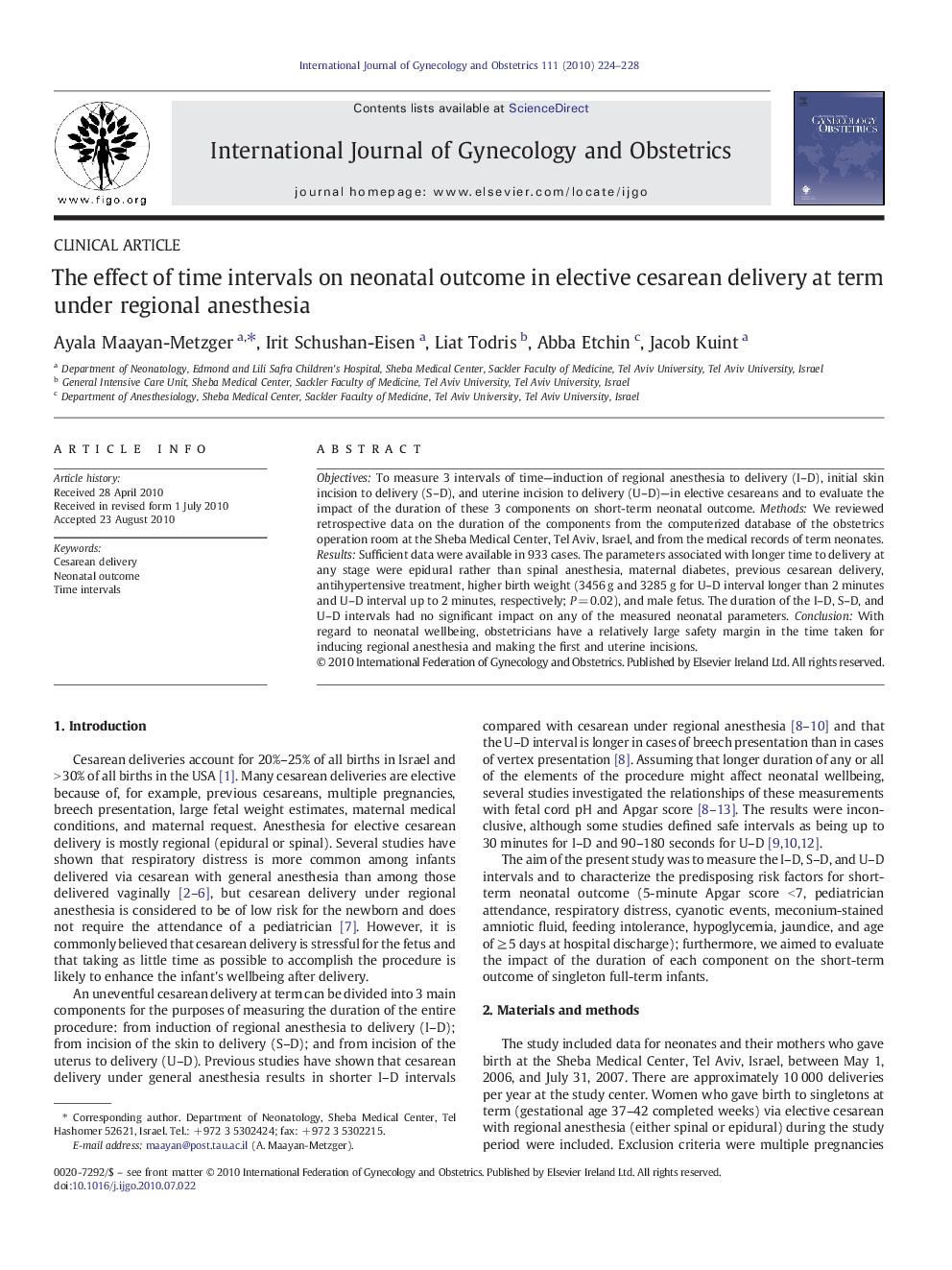| Article ID | Journal | Published Year | Pages | File Type |
|---|---|---|---|---|
| 3954435 | International Journal of Gynecology & Obstetrics | 2010 | 5 Pages |
ObjectivesTo measure 3 intervals of time—induction of regional anesthesia to delivery (I–D), initial skin incision to delivery (S–D), and uterine incision to delivery (U–D)—in elective cesareans and to evaluate the impact of the duration of these 3 components on short-term neonatal outcome.MethodsWe reviewed retrospective data on the duration of the components from the computerized database of the obstetrics operation room at the Sheba Medical Center, Tel Aviv, Israel, and from the medical records of term neonates.ResultsSufficient data were available in 933 cases. The parameters associated with longer time to delivery at any stage were epidural rather than spinal anesthesia, maternal diabetes, previous cesarean delivery, antihypertensive treatment, higher birth weight (3456 g and 3285 g for U–D interval longer than 2 minutes and U–D interval up to 2 minutes, respectively; P = 0.02), and male fetus. The duration of the I–D, S–D, and U–D intervals had no significant impact on any of the measured neonatal parameters.ConclusionWith regard to neonatal wellbeing, obstetricians have a relatively large safety margin in the time taken for inducing regional anesthesia and making the first and uterine incisions.
